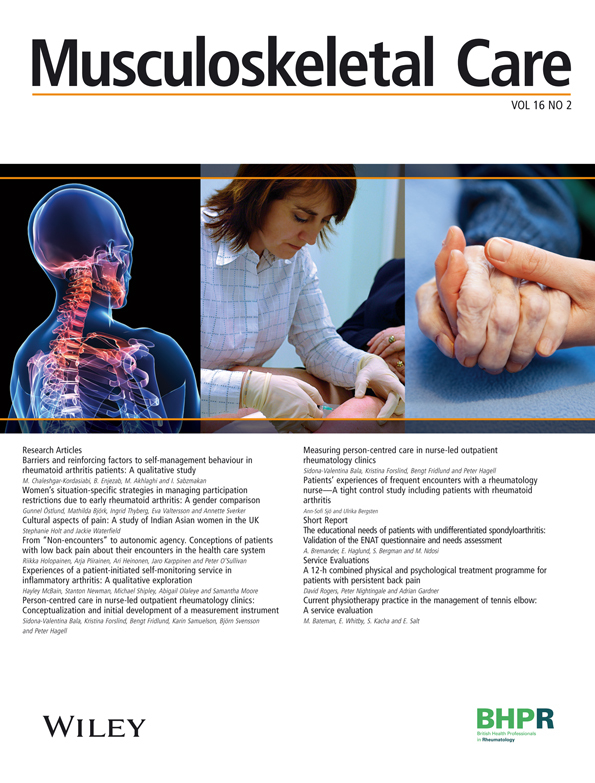The educational needs of patients with undifferentiated spondyloarthritis: Validation of the ENAT questionnaire and needs assessment*
Abstract
Objectives
The aim of the present study was to validate the Swedish version of the educational needs assessment tool (SwENAT) in undifferentiated spondyloarthritis (USpA) and use it to study the educational needs of patients with USpA.
Methods
This was a cross-sectional study, recruiting a random sample of patients with USpA from a hospital register in Sweden. Educational needs data were collected, together with disease activity and function indices (Bath Ankylosing Spondylitis Disease Activity Index [BASDAI] and Bath Ankylosing Spondylitis Functional Index [BASFI]). Rasch analysis was utilized to evaluate the construct validity, internal consistency and unidimensionality of the SwENAT before studying differences in educational needs between patient subgroups (gender, age and disease severity).
Results
Complete responses were obtained from 77 patients (48 women), with a mean age (standard deviation [SD]) of 50 (12) years, a disease duration of 16 (11) years, a BASDAI score of 4.9 (1.9) and a BASFI score of 3.1 (2.3). The SwENAT satisfied the requirements of the Rasch model (χ2 = 11.488; p = 0.119), including strict unidimensionality. Overall, the mean (SD) SwENAT score was 86 (32). Women reported higher needs than men in the domains of pain (mean [SD] 13.1 [6.8] versus 10.1 [6.0]; p = 0.05); movement (mean [SD] 13.0 [5.5] versus 9.9 [5.7]; p = 0.02) and self-help (mean [SD] 17.0 [5.8] versus 14.1 [5.0]; p = 0.03). Higher disease activity (BASDAI >4) was associated with higher educational needs (mean [SD] 92.6 [31.9] versus 73.7 [29.4]; p = 0.02).
Conclusions
These data suggest that the SwENAT is valid in USpA. Women and patients with higher disease activity are more likely to have high levels of educational needs, so special attention and strategies to target patient education are warranted.




